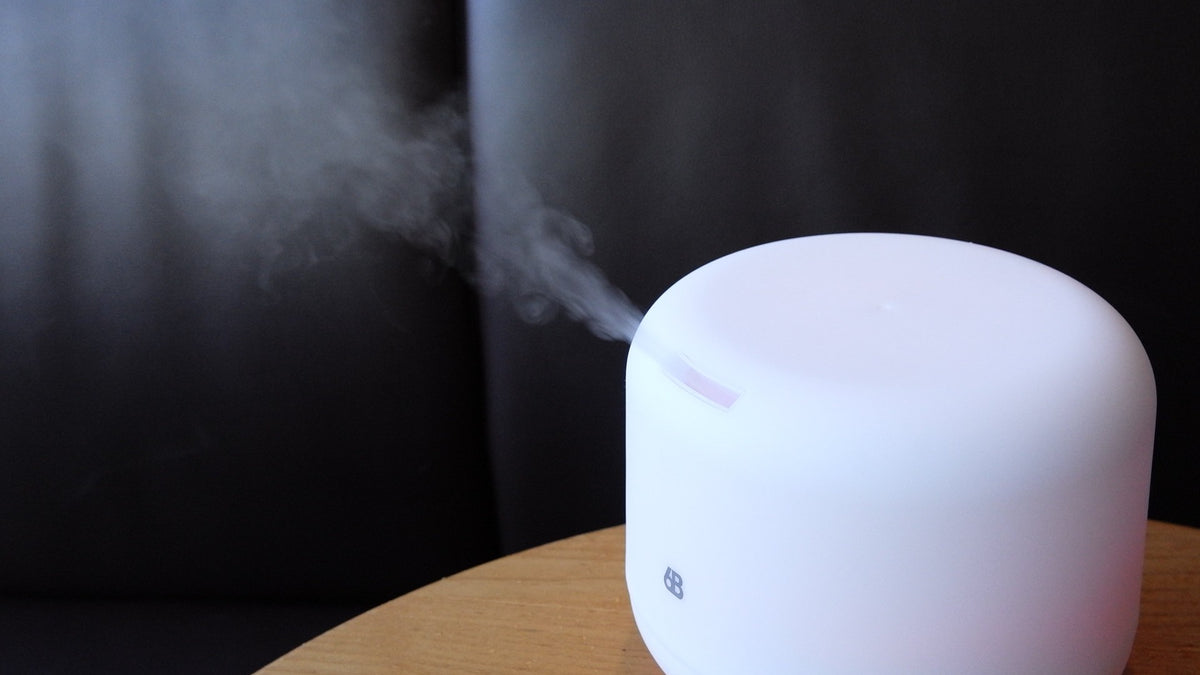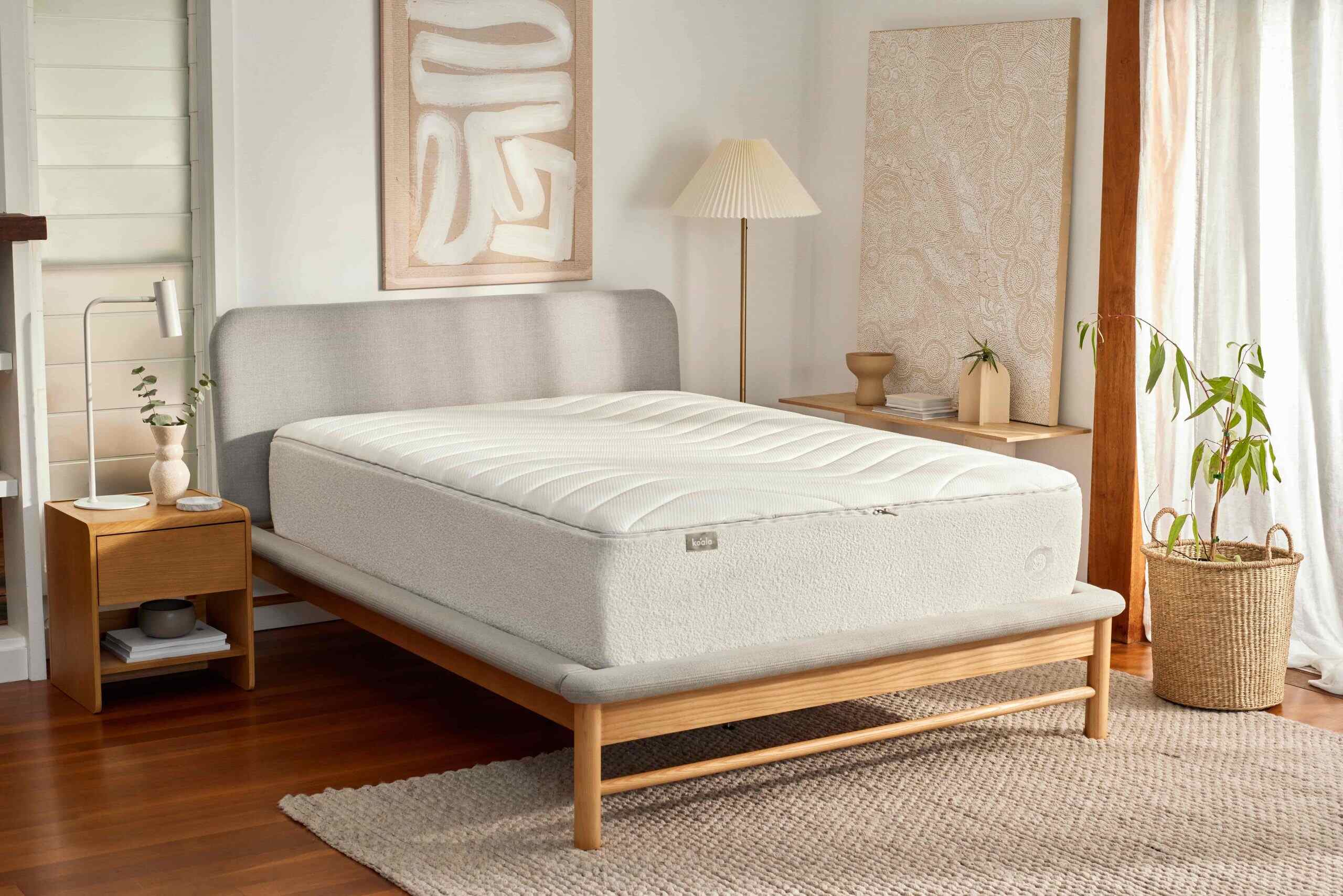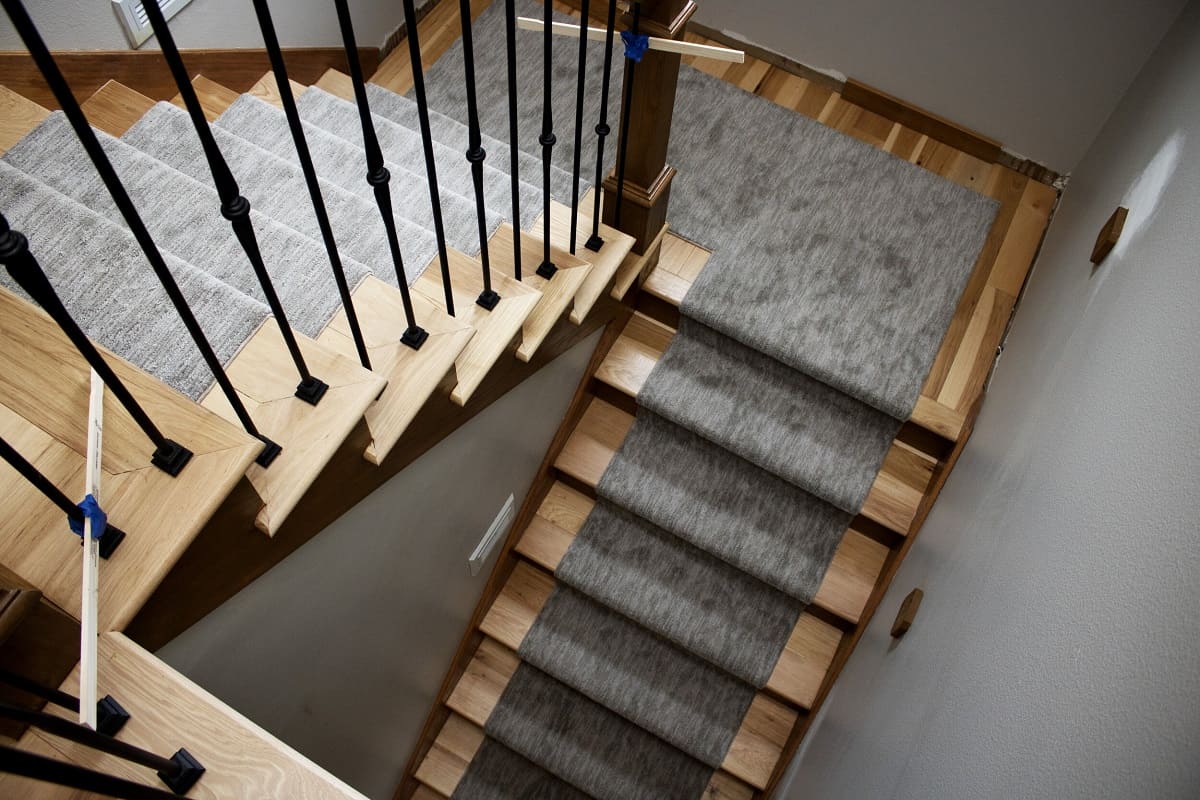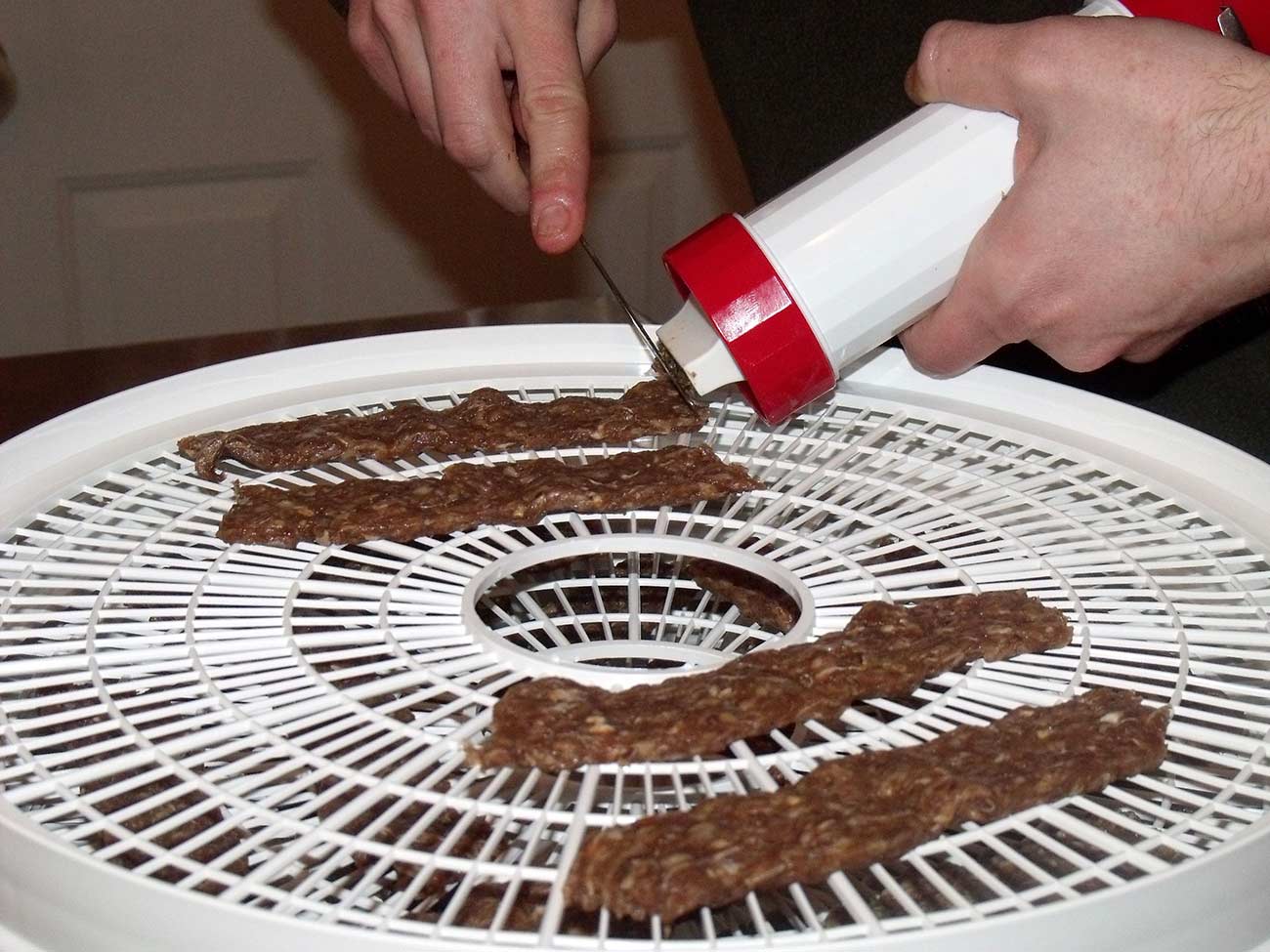Home>Furniture>Bedroom Furniture>How Do You Know When You Need A New Mattress


Bedroom Furniture
How Do You Know When You Need A New Mattress
Modified: January 9, 2024
Find out when it's time to replace your mattress and improve your sleep quality. Explore our selection of bedroom furniture for a better night's rest.
(Many of the links in this article redirect to a specific reviewed product. Your purchase of these products through affiliate links helps to generate commission for Storables.com, at no extra cost. Learn more)
Introduction
When it comes to getting a good night’s sleep, your mattress plays a significant role. It provides support, comfort, and can greatly impact the quality of your slumber. But how do you know when it’s time to bid farewell to your old mattress and welcome a new one into your bedroom?
In this article, we will explore the signs that indicate your mattress may be reaching the end of its lifespan. From physical discomfort to visible wear and tear, we’ll cover all the telltale signs that it’s time to invest in a new mattress. So, if you’ve been tossing and turning wondering whether it’s time to say goodbye to your old sleep surface, read on to discover the unmistakable signs that you need a new mattress.
Note: If you are experiencing chronic pain or health issues related to sleep, it’s always best to consult with a healthcare professional for personalized advice.
Key Takeaways:
- Signs of a Worn-Out Mattress
If you’re waking up with aches, pains, or allergies, it might be time for a new mattress. Look out for physical discomfort, visible wear and tear, and changes in sleep quality as clear signs of needing an upgrade. - Factors to Consider when Buying a New Mattress
When shopping for a new mattress, prioritize comfort, support, materials, and budget. Test different options, consider motion isolation, temperature regulation, and warranty to ensure a restful and rejuvenating sleep experience.
Read more: How Do You Know When You Need A New Roof
Signs of a Worn-Out Mattress
Your mattress is not only a place to rest your tired body after a long day but also a haven for relaxation and rejuvenation. Over time, however, the wear and tear incurred by daily use can take a toll on its performance and comfort. Here are some signs that indicate your mattress may be past its prime:
- Physical Discomfort during Sleep: If you find yourself waking up with aches and pains, it could be a sign that your mattress is no longer providing the necessary support. As the cushioning and padding wear down, it becomes harder for the mattress to contour to your body’s natural curves, leading to discomfort and restlessness.
- Back or Neck Pain upon Waking: A worn-out mattress often fails to maintain proper spinal alignment during sleep. As a result, you may wake up with a stiff neck or aching back. These persistent issues may be an indicator that your mattress is no longer supporting your body as it should.
- Allergies or Asthma Symptoms exacerbated by the Mattress: Mattresses can harbor allergens such as dust mites, mold, and mildew, which can trigger allergies or aggravate asthma symptoms. If you notice an increase in these symptoms while you’re in bed, it could be a sign that your mattress needs replacing.
- Visible Wear and Tear: Take a close look at your mattress. Are there visible signs of wear and tear? Rips, sagging areas, or lumps are clear indications that your mattress has been well-loved and may no longer provide the comfort and support you need for a good night’s sleep.
- Uneven or Sagging Surface: An uneven or sagging surface not only affects the appearance of your mattress but also affects your sleep. If you notice that your mattress sags in specific areas or has indentations where you usually sleep, it may be time to consider a replacement.
- Changes in Sleep Quality: Has your sleep quality noticeably declined? Do you find yourself tossing and turning more often? Difficulty finding a comfortable position or experiencing frequent disturbances during sleep could be a sign that your mattress is no longer providing the right level of support and comfort.
Paying attention to these signs can help you determine when it’s time to invest in a new mattress. Remember, a good night’s sleep is crucial for your overall well-being, and a worn-out mattress can hinder your sleep quality and leave you feeling tired and unrested. So, don’t ignore the signs and take steps to upgrade your sleep surface for a better sleep experience.
Physical Discomfort during Sleep
Waking up refreshed and pain-free is the ideal way to start your day. However, if you consistently experience physical discomfort during sleep, it could be a sign that your mattress is no longer providing the necessary support and comfort. Here are some common sources of physical discomfort and how they are related to a worn-out mattress:
Pressure Points: As you sleep, your body exerts pressure on the mattress, particularly on areas like your shoulders, hips, and lower back. A worn-out mattress may fail to distribute this pressure evenly, causing certain parts of your body to bear the brunt of it. Over time, these pressure points can lead to pain and discomfort.
Lack of Support: Your mattress is designed to align your spine and support your body’s natural curves. However, as a mattress ages, it loses its ability to provide optimal support. This can result in poor spinal alignment and added strain on your back and neck. The lack of support can also cause muscles to work harder during the night, leading to muscle stiffness and soreness in the morning.
Lack of Cushioning: Over time, the padding and cushioning of a mattress can deteriorate, making it less comfortable to sleep on. Without proper cushioning, you may feel the pressure of the springs or the underlying support system, which can lead to discomfort and disrupted sleep.
Unresponsive Surface: A worn-out mattress may lose its ability to respond to your movements during sleep. This means that it doesn’t conform to your body’s contours and adjust to changes in your position, resulting in discomfort and difficulty finding a comfortable sleep posture.
If you consistently experience physical discomfort during sleep, it’s crucial to assess the condition of your mattress. Look for signs of wear and tear, visible sagging, or lumps in the surface. These indications suggest that your mattress is no longer providing the support and comfort you need for a restful night’s sleep.
Remember, your mattress should be a sanctuary for relaxation, allowing you to wake up rejuvenated and ready to tackle the day. If physical discomfort is interfering with your sleep quality, it may be time to consider investing in a new mattress that will provide the support and comfort your body needs.
Back or Neck Pain upon Waking
Waking up with back or neck pain can put a damper on your day before it even begins. If you consistently experience discomfort in these areas upon waking, your mattress could be the culprit. Here’s how a worn-out mattress can contribute to back or neck pain:
Lack of Support: As a mattress ages and loses its structural integrity, it may no longer provide adequate support for your spine. A sagging or lumpy mattress can cause your spine to be misaligned during sleep, leading to strained muscles and ligaments in the back or neck. This misalignment can contribute to morning discomfort and pain.
Lack of Proper Cushioning: The cushioning layers in your mattress play a crucial role in providing pressure relief and maintaining spinal alignment. Over time, these layers can break down, resulting in a mattress that feels too firm or lacks sufficient cushioning. Without proper cushioning, your back and neck may not receive the necessary support, resulting in pain and discomfort.
Mattress Firmness: The level of firmness in your mattress is also important when it comes to preventing back and neck pain. A mattress that is too soft or too firm may not properly support your body’s natural curves, leading to misalignment and strain on the back and neck. Finding a mattress with the right level of firmness can help alleviate these issues.
It’s essential to pay attention to the relationship between your mattress and your back and neck health. If you consistently wake up with back or neck pain, it may be time to consider investing in a new mattress that provides the proper support and alignment your body needs. When shopping for a new mattress, look for options that offer targeted support for the lumbar area and are designed to promote spinal alignment.
While a new mattress can significantly improve your sleep experience, it’s important to note that individual comfort preferences vary. Consider factors such as your preferred sleep position and specific needs, such as additional support for specific areas of your body. Consulting with a knowledgeable salesperson or conducting thorough research can help you find the right mattress that alleviates your back or neck pain and promotes restful sleep.
Remember, a well-supported and comfortable sleep surface can make a world of difference in your overall well-being, allowing you to wake up feeling refreshed and free from morning aches and pains.
Allergies or Asthma Symptoms exacerbated by Mattress
If you suffer from allergies or asthma, your mattress can significantly impact your respiratory health. Over time, mattresses can accumulate allergens such as dust mites, mold, and mildew. These allergens can trigger allergies or worsen asthma symptoms, making it crucial to ensure that your mattress is not exacerbating your condition. Here’s how a worn-out mattress can contribute to allergies or asthma:
Dust Mites: Dust mites are tiny organisms that thrive in warm and humid environments. They feed on dead skin cells, which are plentiful in your mattress. As your mattress ages, it becomes a breeding ground for dust mites. The droppings and body parts of these microscopic creatures can trigger allergic reactions, leading to symptoms such as sneezing, runny nose, itching, and even difficulty breathing for asthma sufferers.
Mold and Mildew: Over time, moisture from sweating or spills can seep into your mattress, creating an ideal environment for the growth of mold and mildew. These fungi release spores that can become airborne and cause respiratory issues, especially for those with allergies or asthma. Breathing in mold spores can lead to coughing, wheezing, chest tightness, and other respiratory symptoms.
If you notice an increase in your allergy or asthma symptoms while in bed, it’s essential to assess the condition of your mattress. Look for signs of mold or mildew growth, such as visible stains or musty odors. Additionally, consider using dust mite-proof mattress covers or encasements to minimize exposure to allergens.
Regularly cleaning and maintaining your mattress can also help reduce the presence of allergens. Vacuuming the mattress surface regularly, washing bedding in hot water, and allowing your mattress to breathe by removing the covers periodically can help eliminate dust mites and reduce the risk of mold or mildew growth.
However, despite regular cleaning, a heavily worn or old mattress may continue to exacerbate your allergies or asthma. In such cases, investing in a new mattress is highly recommended. Look for hypoallergenic or allergy-friendly mattresses that are designed to resist allergens and provide a healthier sleep environment.
Remember, your mattress should be a safe and comfortable space that promotes a restful night’s sleep. If your allergies or asthma symptoms persist or worsen despite efforts to maintain a clean sleep environment, it may be time to prioritize your health and consider upgrading to a new mattress that better aligns with your respiratory needs.
Read more: How Do I Know When I Need A New Mattress
Visible Wear and Tear
Your mattress, like any other household item, is subject to wear and tear over time. As you use your mattress for sleep, relaxation, and other activities, it can start to show signs of aging. Here are some visible indicators that it may be time to replace your mattress:
Visible Stains: Stains can accumulate over the years, whether they are from spills, accidents, or sweat. While these stains may not directly affect the functionality of your mattress, they can be unsightly and difficult to remove. If you find that your mattress has noticeable and stubborn stains that won’t come out, it may be an indication that it’s time for a replacement.
Torn or Ripped Cover: The cover of your mattress serves as a protective layer, shielding the internal components from dirt, allergens, and damage. Over time, the cover can become worn, torn, or ripped. Not only does this affect the appearance of your mattress, but it also compromises its ability to properly protect the mattress itself. If the cover is severely damaged, it may be time to consider a new mattress.
Unstable or Weak Edges: The edges of your mattress can lose their structure and support as the mattress ages. If you notice that the edges collapse or feel weak when sitting or lying near them, it’s a sign that the core support of the mattress is deteriorating. This can impact the overall stability and longevity of the mattress, and it may be time to start shopping for a replacement.
Compression or Indentations: Over time, your body weight can cause compression and indentations in the mattress surface. These impressions can be visible, making your mattress look uneven or saggy. If you find that your mattress has developed permanent indentations that don’t spring back, it indicates that the foam or support materials within the mattress have worn down and are no longer providing adequate support.
Exposed Springs or Wires: If you have an innerspring mattress, visible signs of wear may include exposed springs or wires. These can poke and prod your body during sleep, causing discomfort and interrupted rest. Exposed springs or wires are a clear indication that your mattress has seen better days and needs to be replaced.
If you notice any of these visible signs of wear and tear on your mattress, it’s important to consider investing in a new one. While regular cleaning and maintenance can help extend the lifespan of your mattress, there comes a point where the visible deterioration impacts its performance and your comfort.
Replacing your mattress with a new one will not only improve the aesthetic appeal of your sleep environment but also ensure that you have a fresh and supportive surface for a good night’s sleep. So, if your mattress is showing signs of visible wear and tear, it’s time to start shopping for a replacement that will provide comfort, support, and a rejuvenated sleeping experience.
If you wake up with aches and pains, or if your mattress is visibly sagging or lumpy, it may be time for a new one. Most mattresses should be replaced every 7-10 years for optimal comfort and support.
Uneven or Sagging Surface
An even and supportive sleep surface is essential for a restful night’s sleep. However, over time, mattresses can develop uneven or sagging areas that compromise their ability to provide adequate support. Here’s how an uneven or sagging surface can impact your sleep:
Lack of Spinal Alignment: When a mattress sags or develops indentations, it fails to properly support your body’s natural curves, leading to poor spinal alignment. As a result, you may experience discomfort and pain in your back, neck, and joints. The lack of proper spinal alignment can also contribute to muscular strain and restless sleep.
Increased Pressure Points: As a mattress develops indentations or sags, the weight of your body is distributed unevenly. This can lead to increased pressure on specific areas, such as your shoulders, hips, and lower back. These pressure points can cause discomfort and disrupt your sleep, leaving you feeling sore and fatigued in the morning.
Impaired Motion Transfer: An uneven or sagging surface can result in impaired motion transfer between sleeping partners. If one side of the mattress sinks significantly lower than the other, minor movements can cause significant disturbances. This can lead to interrupted sleep and a reduced sleep quality for both individuals sharing the bed.
Accelerated Wear and Tear: Uneven or sagging areas of a mattress can result in increased wear and tear in those specific spots. As the weight of your body is concentrated in these areas, they are more prone to experience faster deterioration. This can lead to further sagging and a decrease in the overall lifespan of your mattress.
If you notice an uneven or sagging surface on your mattress, it’s important to address the issue promptly. While some slight changes in support can be expected over time, significant sagging or indentations can greatly affect your sleep quality and overall comfort.
If your mattress is relatively new and still within the warranty period, contact the manufacturer to inquire about the warranty process. Many warranties cover sagging beyond a certain threshold, and you may be eligible for a replacement or repair. However, if your mattress is outside of the warranty period or the sagging is significant, it may be more beneficial to invest in a new mattress that provides the support and stability you need for restful sleep.
When shopping for a new mattress, look for options with good support systems, such as individually wrapped coils or high-density foam. These materials are designed to provide enhanced support and durability, reducing the likelihood of sagging or indentations over time.
Remember, a sagging or uneven surface can directly impact your sleep quality and overall comfort. By recognizing the signs and taking steps to address them, you can ensure that you have a supportive and comfortable sleep surface for a restorative night’s sleep.
Changes in Sleep Quality
Quality sleep is essential for overall well-being and daily functioning. If you find that your sleep quality has declined, your mattress could be a contributing factor. Here are some ways in which changes in sleep quality might indicate the need for a new mattress:
Restlessness and Tossing: Do you find yourself tossing and turning throughout the night, struggling to find a comfortable position? A worn-out mattress may fail to provide the right level of support and comfort, causing restlessness and an inability to settle into deep sleep. If your sleep has become more restless and disrupted, it could be a sign that your mattress needs to be replaced.
Difficulty Falling Asleep: A lack of comfort and support can make it challenging to fall asleep. If you find yourself tossing and turning for an extended period before finally dozing off, it may be a signal that your mattress is no longer meeting your needs. A new mattress could provide the comfort and relaxation necessary for easier and quicker sleep onset.
Waking Up Frequently: If you find yourself waking up frequently throughout the night, it could be due to discomfort caused by your mattress. An unsupportive or worn-out mattress may cause you to shift positions frequently or wake up to relieve pressure points. This interrupted sleep pattern can lead to daytime fatigue, reduced productivity, and overall dissatisfaction with your sleep quality.
Feeling Tired and Unrested: Despite spending an adequate amount of time in bed, you may wake up feeling tired and unrested if your mattress is no longer providing the necessary support and comfort. This can affect your energy levels, mood, and cognitive function throughout the day. If you consistently feel groggy and lack the rejuvenation that comes from a good night’s sleep, it’s a clear indication that your mattress needs to be replaced.
Partner Disturbance: If you share your bed with a partner, an old mattress may cause increased motion transfer, making you more susceptible to disturbances from their movements. A new mattress with improved motion isolation can help minimize these disruptions, allowing for better sleep quality and a more restful experience for both you and your partner.
Changes in sleep quality can stem from various factors, and your mattress is a crucial one to consider. If you’ve noticed a decline in your sleep quality and have ruled out other potential causes, it’s a good idea to evaluate the condition of your mattress. If it is no longer providing the support, comfort, and quality sleep you deserve, it’s time to start considering a mattress upgrade.
When shopping for a new mattress, consider your specific sleep needs and preferences. Whether you prefer memory foam, latex, or innerspring, choose a mattress that offers the right balance of support and comfort for your body. Taking the time to invest in a quality mattress can result in improved sleep quality, overall well-being, and a more refreshed start to each day.
Recommended Lifespan of Mattresses
Just like any other product, mattresses have a limited lifespan. While the specific lifespan can vary depending on the type and quality of the mattress, as well as factors such as usage and maintenance, understanding the recommended lifespan can help you determine when it’s time for a replacement. Here are some general guidelines regarding the lifespan of different types of mattresses:
Innerspring Mattresses: Traditional innerspring mattresses typically have a lifespan of around 7 to 10 years. These mattresses are constructed with steel coils and a comfort layer on top. Factors such as coil quality and gauge, as well as the quality of the comfort materials, can influence the overall durability and lifespan of the mattress.
Memory Foam Mattresses: Memory foam mattresses, known for their contouring and pressure-relieving properties, generally have a lifespan of 8 to 12 years. High-density memory foam tends to be more durable and can last longer compared to low-density foam. The quality of the foam, including its resilience and how well it responds to pressure, plays a significant role in determining the mattress’s longevity.
Latex Mattresses: Natural latex mattresses are known for their durability, and they typically have a lifespan of around 10 to 15 years or more. Latex is a resilient material that can maintain its shape and support over an extended period. The lifespan can vary depending on whether the mattress is made from natural latex or synthetic/blend latex and the overall quality of the materials used.
Hybrid Mattresses: Hybrid mattresses combine the support of innerspring coils with the comfort of foam or latex layers. The lifespan of a hybrid mattress can range from 8 to 12 years. The durability of the coils and the quality of the comfort materials both impact the overall longevity of the mattress.
It’s important to note that these lifespans are general guidelines and can vary depending on individual factors. Factors such as body weight, sleeping position, and usage patterns can influence the wear and tear experienced by the mattress.
Regular maintenance and care can also help prolong the lifespan of your mattress. Rotating or flipping it regularly can help distribute the wear more evenly. Using a mattress protector can also provide an additional layer of defense against spills, stains, and allergens, which can help extend the lifespan of the mattress.
However, it’s essential to regularly evaluate the condition of your mattress and consider replacing it if you start noticing signs of wear and tear, visible sagging, or a decline in comfort and support. If you have been using the same mattress for 8 to 10 years or more and are not experiencing a restful sleep, it’s a good indication that it’s time for a replacement.
Investing in a new mattress not only ensures better sleep quality but also provides the support and comfort necessary for your overall well-being. So, pay attention to the recommended lifespan of your mattress and consider replacing it when it’s time to enjoy the benefits of a fresh and rejuvenating sleep surface.
Factors to Consider when Buying a New Mattress
When it comes to buying a new mattress, there are several important factors to consider to ensure that you choose the best option for your unique needs and preferences. Here are some key factors to keep in mind during the mattress shopping process:
- Comfort: Comfort is subjective and varies from person to person. What feels comfortable to one individual may not be the same for another. It’s crucial to test out different mattresses and determine the level of comfort that suits your body and sleep preferences. Whether you prefer a plush, medium, or firm feel, prioritize finding a mattress that allows you to relax and sleep comfortably.
- Support: A supportive mattress is essential for maintaining proper spinal alignment and preventing discomfort. Look for a mattress that offers targeted support for different parts of your body, such as the lumbar region. The level of support needed may depend on your body weight, sleeping position, and any specific areas of concern, such as back or joint pain.
- Materials: Consider the materials used in the construction of the mattress. Each type of material has its own advantages and characteristics. Memory foam provides pressure relief and contours to your body, latex offers responsiveness and durability, and innerspring mattresses provide bounce and airflow. Research and determine which material aligns with your preferences, sleep needs, and potential allergies.
- Motion Isolation: If you share your bed with a partner or have a restless sleep, consider a mattress with good motion isolation. Foam and latex mattresses tend to perform better in this area, as they absorb and minimize the transfer of motion. This feature can help ensure undisturbed sleep for both you and your sleeping partner.
- Temperature Regulation: Some individuals may prefer a mattress that helps regulate body temperature, especially if they tend to sleep hot. Look for mattresses with breathable materials and features that promote airflow, such as open-cell foams or cooling gel-infused layers. This can help dissipate heat and keep you cool throughout the night.
- Edge Support: If you require additional support or tend to sit on the edge of the bed, consider a mattress with reinforced edge support. This feature prevents the edges from collapsing, providing more stability and allowing you to utilize the entire surface of the mattress.
- Price and Budget: Determine your budget for a new mattress and explore options within that range. While it’s important to invest in a quality mattress, it’s also essential to find one that aligns with your financial situation. Keep in mind that a mattress is a long-term investment in your sleep and overall well-being.
- Warranty and Return Policy: Check the warranty and return policy offered by the mattress manufacturer. A good warranty should cover manufacturing defects and sagging beyond a certain level. Additionally, familiarize yourself with the return policy, as it allows you to test the mattress and ensure it’s the right fit for you.
Remember, buying a mattress is a personal decision. Take the time to visit mattress stores and test out different options. Lie down on the mattress for a few minutes in your preferred sleeping position to assess comfort and support. Don’t hesitate to ask questions and gather information from knowledgeable sales staff or online resources to make an informed decision.
By considering these factors and finding a mattress that meets your specific needs, you’ll be on your way to enjoying a comfortable and restful sleep experience.
Conclusion
Your mattress plays a vital role in your sleep quality, overall comfort, and well-being. Knowing the signs that indicate it’s time for a new mattress is essential for maintaining a restful sleep environment. From physical discomfort and back pain to visible wear and tear and changes in sleep quality, these signs serve as clear indicators that it’s time to invest in a replacement.
Regularly evaluating the condition of your mattress and considering factors such as support, comfort, and durability can help you make an informed decision when it comes to purchasing a new mattress. Remember to prioritize your personal preferences and individual sleep needs, as what works for one person may not work for another. Test out different mattresses, conduct thorough research, and gather advice from experts to find the best option for you.
While the recommended lifespan of mattresses varies based on their type, construction, and usage patterns, it’s important to pay attention to visible wear and tear, sagging areas, and changes in comfort. Investing in a new mattress that offers the right level of support, comfort, and quality can greatly enhance your sleep experience and contribute to better overall health and well-being.
Ultimately, a good night’s sleep is invaluable. It revitalizes your mind and body, improves productivity, and enhances your quality of life. By recognizing the signs of a worn-out mattress and taking the necessary steps to replace it, you are prioritizing your sleep and setting yourself up for a restful and rejuvenating night that will leave you feeling refreshed and ready to take on the day.
So, listen to your body and give it the restful sleep it deserves by saying goodbye to your old mattress and welcoming a new one that will provide the comfort, support, and sleep quality you need. Sweet dreams!
Frequently Asked Questions about How Do You Know When You Need A New Mattress
Was this page helpful?
At Storables.com, we guarantee accurate and reliable information. Our content, validated by Expert Board Contributors, is crafted following stringent Editorial Policies. We're committed to providing you with well-researched, expert-backed insights for all your informational needs.













